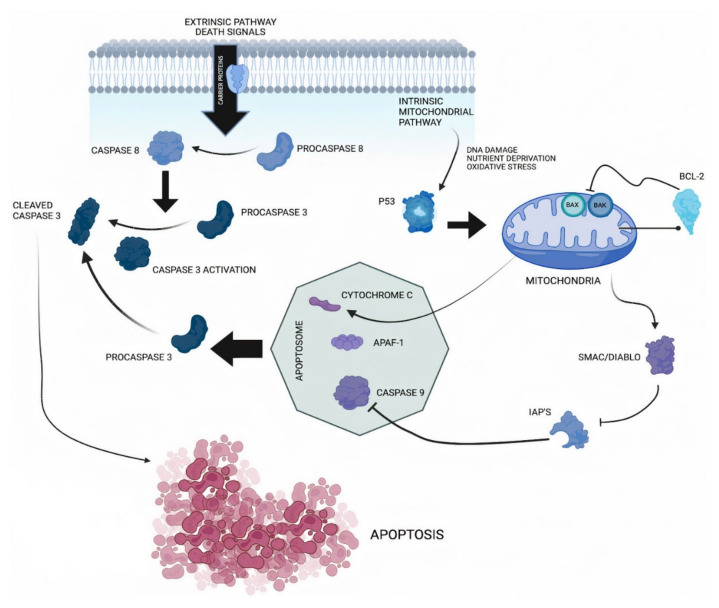Figure 1.
Caspase 3 pathway. The apoptotic process can be triggered by external or internal signals that lead to a common outcome. The extrinsic pathway can be activated when death ligands bind to their corresponding death receptor. Upon ligand binding, an adapter protein is recruited. This leads to the activation of Caspase 8. The intrinsic pathway is initiated by pathological intracellular processes such as DNA damage, nutrient deprivation or oxidative stress. Increased levels of pro-apoptotic proteins such as Bax or Bak (from the family of Bcl-2 proteins) may also be associated with this activation. This triggers the release of cytochrome c from mitochondria, which then binds to and activates apoptosis protease activator protein 1 (Apaf-1), which in turn binds to and activates Caspase 9. Active Caspase 8 or Caspase 9 triggers the cleavage of Caspase 3 through its proenzyme. For apoptosis to take place, inhibitory apoptosis proteins (IAP) must be inactivated by Smac/Diablo proteins.

